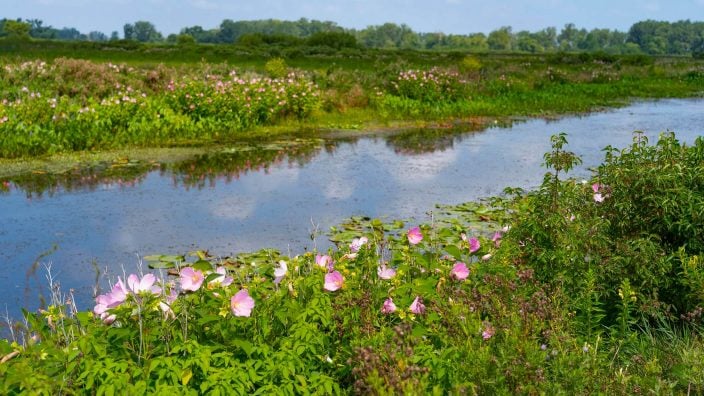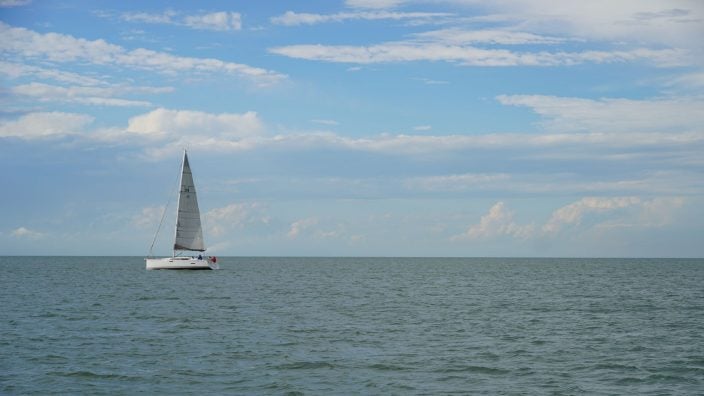Forecast for 2025 Lake Erie algal bloom released
The 2025 algal bloom for the Western Lake Erie Basin is expected to have a severity index of 3, according to the final forecast from the National Oceanic and Atmospheric Administration.
Read MoreAdam Sharp, Ohio Farm Bureau executive vice president, sent the following letter to the editor to The Toledo Blade in response to the Blade Editorial Board's opinion piece, "Plan to protect Lake Erie needs teeth."
Adam Sharp, Ohio Farm Bureau executive vice president, sent the following letter to the editor to The Toledo Blade in response to The Blade Editorial Board’s opinion piece, “Plan to protect Lake Erie needs teeth.” The Blade published Sharp’s response July 31, 2022.
High standards are a great thing when it comes to solving northwest Ohio’s algal bloom issues, but for The Blade Editorial Board, those standards seem to be an elusive moving target. They often call out the governor, the Ohio Department of Agriculture, the Ohio EPA and, more than any one individual or entity, farmers, for what the editorial board calls a lack of regulations, efforts or results when it comes to water quality.
Most recently, the editorial “Plan to protect Lake Erie needs teeth” was quick to point out that a preliminary plan for a TMDL, or Total Maximum Daily Load, falls short of their high standards. They falsely claimed that the overwhelming source of the problem was identified by the TMDL in the form of manure runoff. Nowhere in the TMDL’s Preliminary Modeling Results Document was this or any statement close to this included. However, this rhetoric is very familiar to what is spewed by extremist groups that use Lake Erie’s issues as a guise to push a much more destructive agenda against animal agriculture.
Ironically, almost a year ago when a TMDL was first announced for the Maumee River watershed, the editorial board celebrated and told readers that “This is, at last, the answer to what ails Lake Erie. It is the only way to save the lake, save our source of clean drinking water, save the state’s fishing and tourism industries, and save the quality of life for the region.”
The governor, ODA, Ohio EPA and farmers across the Lake Erie watershed have made significant advancements for clean water. Soil samples, being taken at a higher rate than ever before, are showing levels of phosphorus declining, while at the same time the thousands of farmers enrolled in Governor DeWine’s H2Ohio water quality initiative are doing even more best management practices on millions of acres across the region. Add to that a TMDL that the editorial board has been clamoring for and you would think the board would acknowledge the progress that is being made.
Perhaps it is time for members of the editorial board to adhere to their own high standards to get the facts right, think for themselves and give credit to those who are actually driving progress forward, instead of giving misguided directions from the backseat.
Adam Sharp
Executive Vice President
Ohio Farm Bureau


The 2025 algal bloom for the Western Lake Erie Basin is expected to have a severity index of 3, according to the final forecast from the National Oceanic and Atmospheric Administration.
Read More

Over 30 tour participants witnessed a variety of conservation strategies in action, including cover crops, no-till and strip-till systems, two-stage ditches, land buffers and advanced manure management.
Read More

Experts are monitoring the severity of this season’s algal bloom in The Western Lake Erie Basin. As more research is…
Read More

A proactive approach to water quality in Ohio is getting results without burdensome regulations.
Read More

If you’re interested in exploring manure digesters for your farm, talk to an Ohio State University Extension specialist familiar with the systems.
Read More

This year marks the 10 year anniversary of the Toledo water crisis. Here is a Top 10 list of water quality stories that shine a light on the progress Ohio’s agriculture community is making.
Read More

Learn more about eligibility and how to include conservation practices on CAUV enrollment forms.
Read More

Members had the opportunity to collect two soil samples and deliver them to their county SWCD office between March 25-29.
Read More

ODA will enroll 500,000 acres into the program during a sign-up period ending Friday, May 31, 2024. Contact local SWCD offices to apply.
Read More

After decades of decline, how did the community pull together to push Grand Lake St. Marys in the right direction?
Read More